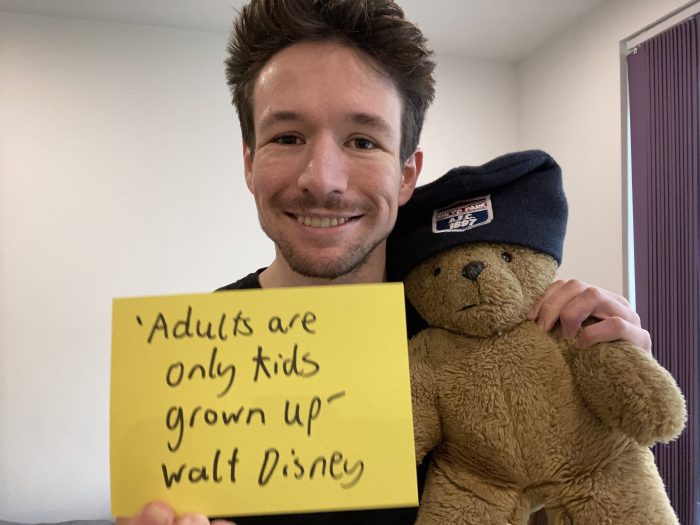Talking to yourself like a child? What on earth is this crazy exercise now Jonny?! Standard madness from me, but something I’ve found very useful and recommended to many other people. This has helped them with their limiting beliefs. Today I am going to explain why it can help with limiting beliefs and what the exercise involves.
So this was an exercise I formed from the workshop Awaken led by Allan Kleynhams, a brilliant man who has worked on Team Tony Robbins. The idea is that we have an inner child within us, that three or four year version of us that has certain beliefs inside. Limiting beliefs are often picked up early in life from getting a bad experience or something shaped us. It doesn’t even have to be extreme trauma, but it developed in the mind of that child you then who didn’t have the logic you did now. These limiting beliefs can cause bad behaviour for us, therefore later in life.
To use myself as an example. I sadly had a baby brother who died when I was 2 and a half. At the time, I didn’t understand why my amazing, loving parents (who I am so grateful for) were leaving me with strangers while they had to go to the hospital. I did not understand why they were so upset and not responding to me before. Of course, logically I know they had to, and it’s the right thing to be with their sick baby, but at the time, the child version of me developed thoughts such as ‘Why are they leaving me? Am I not good enough? Am I not lovable?’
Those were repressed limiting beliefs until I rediscovered them. It explained why I was striving for perfectionism, why I people pleased so much of my life to be liked, and why I found it challenging to live in the present. I know I am not alone with those feelings, but this is an example.
The purpose of this is to talk to that child within you who developed those beliefs and reassure them they are loved and good enough. You may discover deep feelings you did not know were there. To this day, I still dive deep and ask my brain to show me things I may have hidden from myself. This exercise can cause upset in the short term, but we need to establish the route cause of the problem, those limiting beliefs to address them to move forward. No matter what we try consciously if things are left unresolved in the subconscious, we can resort back to bad or self sabotaging behaviour.
The inner child exercise:
Step one: Find a quiet place to not be disturbed and listen to some relaxing music. A high recommendation I have for this is In Dreams by Jai Jagdeesh.
Step two: visualise that young you, smile, and go speak to them.
Step three: listen to what they have to say
Step four: If they do listen to what they have to say while giving them a comforting hug
If they do not tell them ‘It’s ok, I am here for you whenever you need me and I love you’
Step five: Tell them the truth about how amazing they are while smiling and hugging them. Continue this for the song.
This exercise may bring some emotions. I cry even when I do this now. You may realise that when you’ve attacked yourself, you’ve not been nice to this young you. That’s ok to realise this, but then say how sorry you are, and you are here now. This child is you! I suggest repeating this exercise most days but certainly once a week. It can only take ten minutes.
Conclusion
When I realised how I spoke to the inner child, it was a massive game-changer in treating myself. When I get too busy and put too much pressure on myself, I sometimes have to go back to the inner child to explain I am working hard for us, but I will find some fun/play time, which is what the child wants. If you have children, you may be able to relate this to speak to your children in caring for them; well you need to treat yourself the same way with self love. Negative beliefs will, of course, come up in the head, it’s only human nature, but it’s how we deal with them in exercises like this that will help you with your self esteem.
Jonny Pardoe © December 2020
jonnypardoe.com
Instagram: @jonny.pardoe
Facebook: The Self Esteem and Confidence Mindset
LinkedIn: The Self Esteem and Confidence Mindset
YouTube: youtube.com/c/JonnyPardoe
Spotify, Apple Podcasts, Anchor: The Self Esteem and Confidence Mindset
Amazon: Jonny Pardoe











Read 0 comments and reply